Author: Titanium Media
A few days ago, Wang Puzhong, CEO of Meituan's core local business, revealed the profit margin of their food delivery service: about 4%.
This is exactly the "profit margin" of USD stablecoins. The business model of stablecoins is to use the money users spend to purchase stablecoins to buy government bonds, earning profits, and the current yield on USD government bonds is approximately 4%.
— It may not seem like much, but it already exceeds the net profits of many companies.
Walmart's net profit margin for fiscal year 2024 is only 2.39%, JD.com's net profit margin for 2024 is 3.6%, and Amazon's retail business profit margin is about 5%.
These companies are precisely the large corporations actively issuing stablecoins today.
If stablecoins can indeed become the mainstream payment method within their ecosystems as envisioned by the outside world, the interest income alone could amount to hundreds of millions each year—this is not just a method of financial management, but a potential pillar of income. Many low-margin businesses will see their business models undergo permanent changes.
The Lower the Profit, the Greater the Need for Stablecoins
4% is a "natural bottom line" in the world of USD stablecoins.
The entire industry's business model revolves around this number, which is the current yield on USD government bonds.
Most of the fees paid by stablecoin users to purchase stablecoins are used by the issuers to buy these risk-free investment products. If they can issue $100 million in stablecoins, the issuer could earn about $4 million in revenue each year. This is the business model of stablecoin providers like Circle and Tether.
On one hand, 4% is too low.
It is merely an interest rate; a company can certainly optimize its financial structure through interest, but how can it rely solely on bank interest for sustenance? Moreover, it is volatile; if the Federal Reserve significantly cuts interest rates, the net profits of all stablecoin issuers would plummet. This business has no pricing power over its profits and is purely cyclical.
On the other hand, 4% is sufficiently high, higher than the net profits of many companies.
Wang Puzhong, CEO of Meituan's core local business segment, mentioned a few days ago that Meituan's food delivery profit margin is about 4%. Internet giants have invested hundreds of billions in competition, only to end up earning a dollar interest rate. Not all internet platforms have profit margins as excellent as Pinduoduo; Didi's profit margin for 2024 is even lower than Meituan's food delivery business, at less than 1%.
Traditional retail companies are known for their long-standing low profits, with Walmart's net profit margin for 2024 at only 2.3%. Walmart's total profit is around $15 billion, which is hardly commensurate with its long-standing position as a top company.
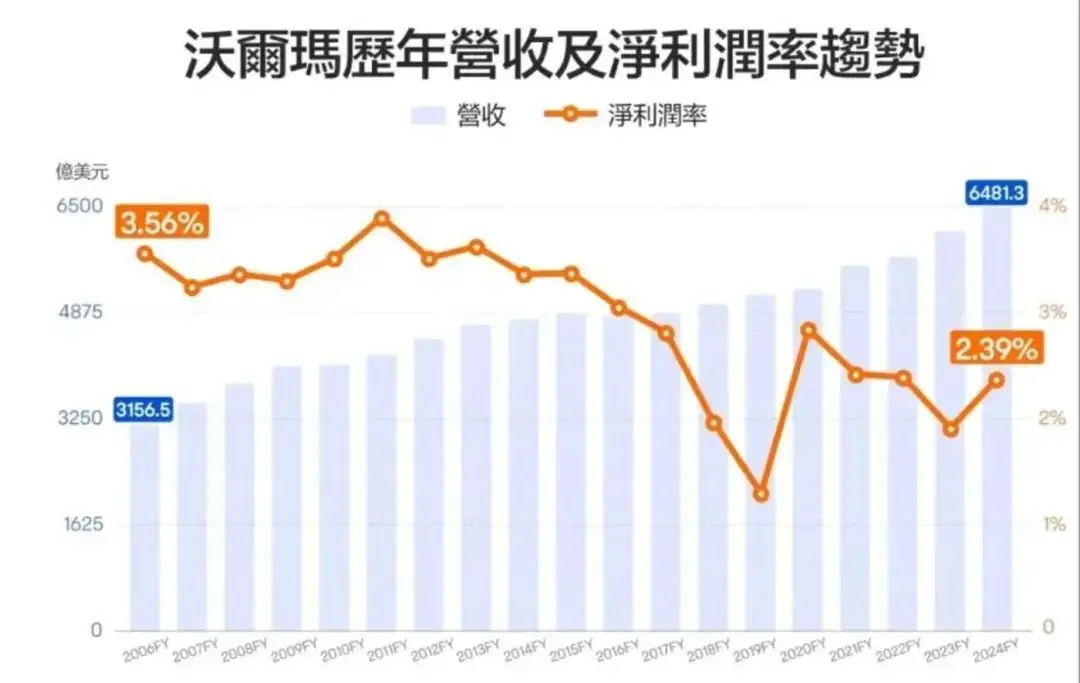
Online retailers are not much better, with JD.com's net profit margin for 2024 at only 3.6%. Over at Amazon, the net profit margin for the entire year of 2024 is below 10%—this is still the result after high-margin cloud services have propped it up, with estimates suggesting its retail business has only about a 5% margin.
Manufacturing is even worse, with many leading companies operating at a loss; some companies don't even have a 1% profit margin, let alone 4%.
For Apple, 4% interest might just be a nice addition, but for these companies, it is enough to support their core business's main profits. — Financials as a primary profit source is not without precedent; for instance, Li Auto reported an operating loss in the first half of 2024, with 1.692 billion yuan of net profit coming from investment income. General Electric had low manufacturing profits at its peak, but 40%-50% of its profits came from financial services.
It can be said that the lower the profit margin of a company, the more it needs financial tools like stablecoins to optimize its business model.
Of course, not every company has the capability to issue large amounts of stablecoins. The role of stablecoins is transactional; they require sufficient transaction volume to support them—making retail the most suitable sector. They have nearly the largest transaction volume in all industries and a strong ability to issue coins. At the same time, their low profit margins mean that the returns from entering this field would be more substantial than for high-margin companies.
Thus, retail companies have become the most proactive group in venturing into the stablecoin space. In June, media reports revealed that both Walmart and Amazon plan to launch stablecoins. Besides these two retail giants, the OTA platform Expedia is also gearing up. Across the ocean, Liu Qiangdong personally announced that JD.com hopes to apply for stablecoin licenses in all major currency countries globally.
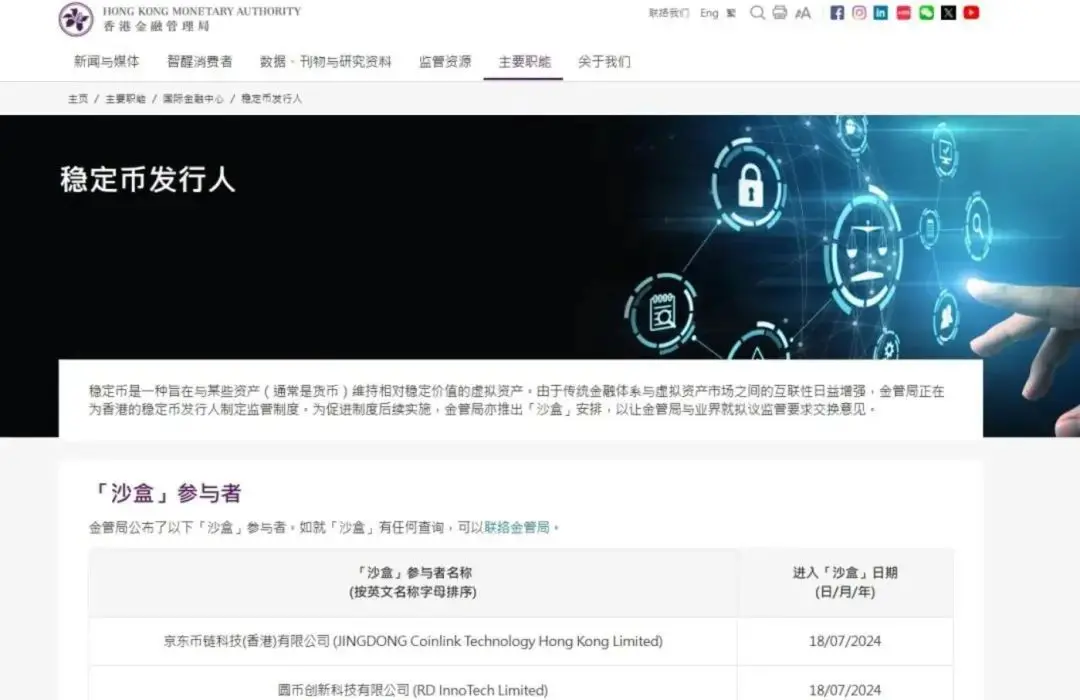
Their ultimate goal is clear: to issue large amounts of stablecoins for transactions of their own products. Ideally, all transactions within their ecosystems would be conducted using their own stablecoins, just like barbershops accept payments through membership cards. They would then save these "preloaded" fees to earn interest.
How Much Can They Earn?
How much income can stablecoins actually bring?
Taking Walmart as an example, Walmart's revenue last year reached $680 billion, and in addition, Walmart has some third-party e-commerce business, with total GMV possibly exceeding $700 billion. If they could issue stablecoins equal to one-tenth of their GMV, the market value of their stablecoins could potentially surpass Circle. If they could issue stablecoins equal to their GMV, Walmart would become a giant in the stablecoin industry.
So, can Walmart issue $700 billion in stablecoins?
Of course not. After all, money is fluid; $700 billion in GMV does not require $700 billion in stablecoins. The amount of stablecoins that Walmart can issue is actually "the amount of unspent balance that can be settled in the market."
This number has a reference: the unspent member funds of Starbucks. Starbucks' 2024 financial report shows that the amount of stored value cards on its books reached $1.7 billion. It is worth noting that Starbucks' annual net revenue is only $36 billion, while Walmart is about 20 times that. If Walmart could achieve the same preloaded ratio as Starbucks with stablecoins, meaning nearly 5% of its revenue is settled in member card preloads, it would have nearly $40 billion in unspent funds.
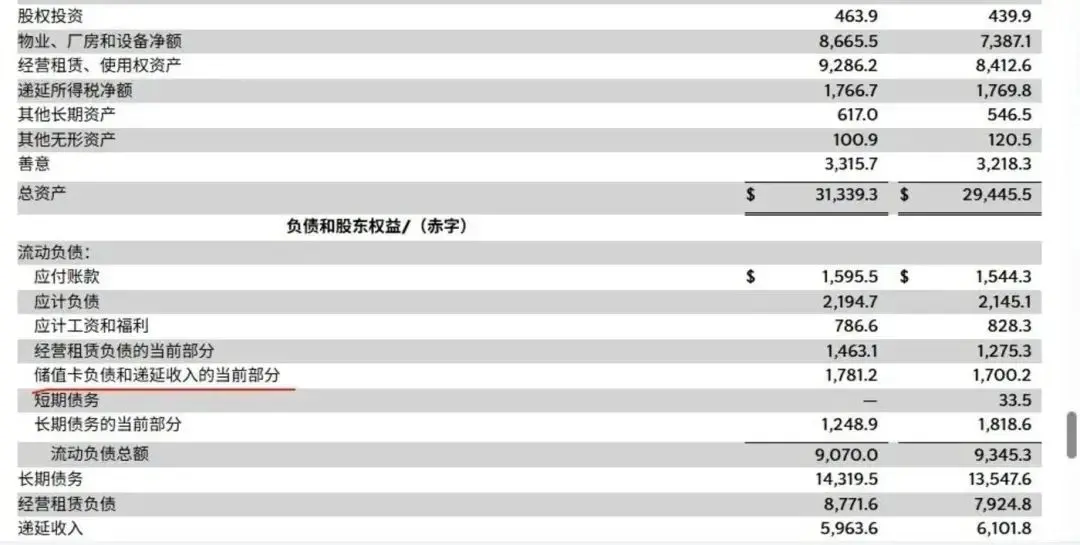
Caption: This $1.7 billion is member recharges that have not yet been spent. Starbucks can use it to purchase government bonds, earning about $70 million in profit each year.
Additionally, Starbucks is a high-frequency consumption model, while whether it is Walmart's supermarket shopping or JD.com and Amazon's online shopping, the frequency is far lower than "having a cup of coffee." The lower the shopping frequency, the slower the flow of funds, and the more unspent amounts on the cards—allowing for more coins to be issued.
The single transaction amount in retail is also much higher than that of Starbucks—Americans often spend hundreds of dollars at the supermarket, while a cup of coffee costs only $5. Higher spending amounts mean that the required balance on the books is also larger, and retailers can attract consumers to recharge more by offering "recharge $1000 and get $100"—allowing for more coins to be issued.
In terms of capability, Walmart's ability to accumulate funds is stronger than that of Starbucks. If its stablecoin payment ratio could reach that of Starbucks' member card payment ratio, its issuance could likely exceed $50 billion, with annual interest income surpassing $2 billion. For Walmart, with an annual profit of $15 billion, this is certainly not a small amount.
And it doesn't stop there; retailers like Walmart and Amazon also pay card organizations like VISA, Mastercard, and American Express tens of billions of dollars in fees each year. If the payment system can be significantly replaced by stablecoins, this would save a substantial amount of profit.
Moreover, if all liquidity is settled on their own chain, it could give rise to a vast array of financial management services.
— An even more unrealistic vision is that as terminal retailers, Walmart, Amazon, and JD.com could even use stablecoins to pay upstream suppliers and employee bonuses, with the potential directly referencing the companies' accounts payable. Walmart's accounts payable has long been over $50 billion, and JD.com's latest financial report shows accounts payable reaching 176.736 billion yuan. If these payables are settled through stablecoins, upstream manufacturers receive stablecoins, and during the time gap before the stablecoins are redeemed, the issuer could earn interest for a period.
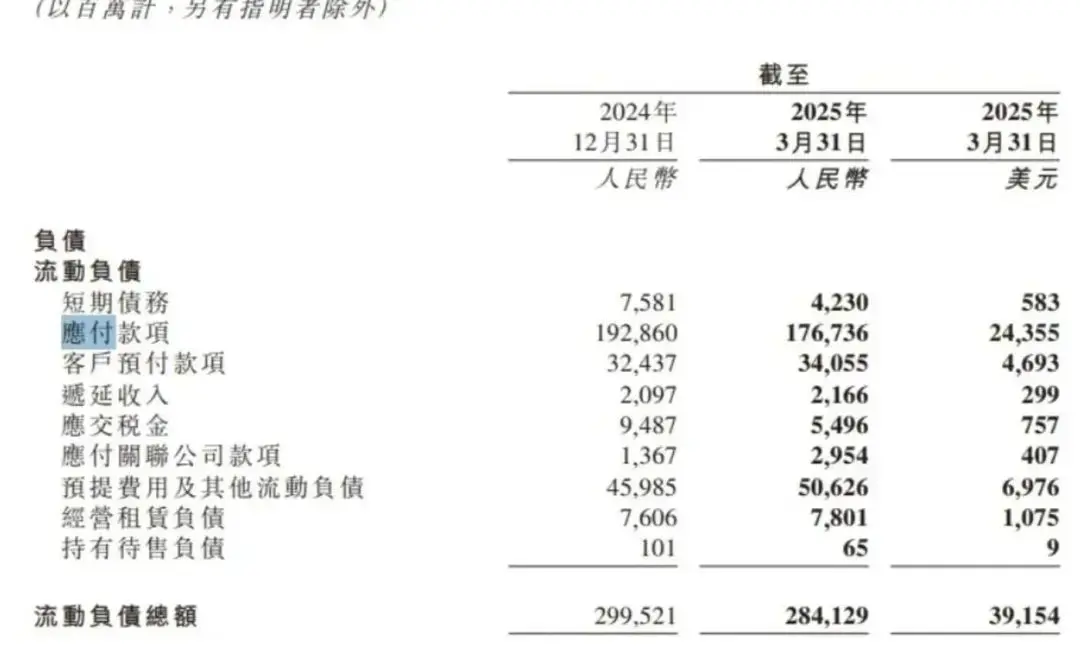
Caption: Retailers, as the most downstream in the supply chain, hold a large amount of upstream funds.
As long as the above visions can be partially realized, for these high-revenue but low-margin companies, income from stablecoins could even surpass that from their main business. The business models of consumer companies may also completely change; they could operate like Costco: not making money from selling goods, but making friends, and then earning profits through stablecoins (membership cards).
Everyone is an Insurance Company
Of course, in the world of finance, simply earning a lot is not enough; one must also survive in the long run.
In fact, before stablecoins, many companies tried to improve their low profits through finance, but most ultimately failed.
Take the manufacturing giant GE (General Electric) as an example. Compared to the meager profits from manufacturing, money from finance seemed abundant and easy to earn. This became GE's tool for "improving poor businesses," with over half of its profits coming from the financial sector at its peak.
However, the risks were also evident. Because the vast majority of companies engaging in finance have only one source of funds: borrowing.
For instance, GE was one of the most prolific bond issuers in history; before the financial crisis, GE's commercial paper scale had exceeded $100 billion. These short-term loans were reissued by GE to earn the interest spread—this was also the business model of many domestic internet finance companies.
Today, people can easily spot the problem: this is essentially "borrowing to pay off loans" or "robbing Peter to pay Paul." It cannot withstand any fluctuations, and if there is any uncertainty in the entire chain, the company may default. The result was indeed as such; during the financial crisis, GE collapsed, and its stock price evaporated by 80%.
It is precisely the extreme risk of finance that has made GE's approach nearly disappear. Today's internet finance companies like Du Xiaoman primarily serve as platforms, with funds coming from banks and other partners, rather than borrowing to earn interest spreads themselves. After all, one fluctuation could break the entire chain.
— But stablecoins do not have this problem.
Compared to traditional finance, the financing model of stablecoins is akin to playing a trick: companies issuing bonds must pay high interest, and even banks must pay interest to depositors. But stablecoin issuers do not have to pay any interest. They can even charge a certain fee when cashing out; for example, Circle, the first stablecoin company, raised its redemption fee last October, up to 0.1%. Not only do they not pay interest for financing, but they can also collect a fee when repaying?
Even if there are fees, stablecoins are not redeemable by everyone. For instance, Tether stipulates that only certain trusted entities that have undergone KYC certification can directly mint or redeem USDT. In short, only large institutions can redeem stablecoins. Even more domineering, Tether reserves the right not to redeem for users, truly putting the saying "the one who owes money is the master" into practice.
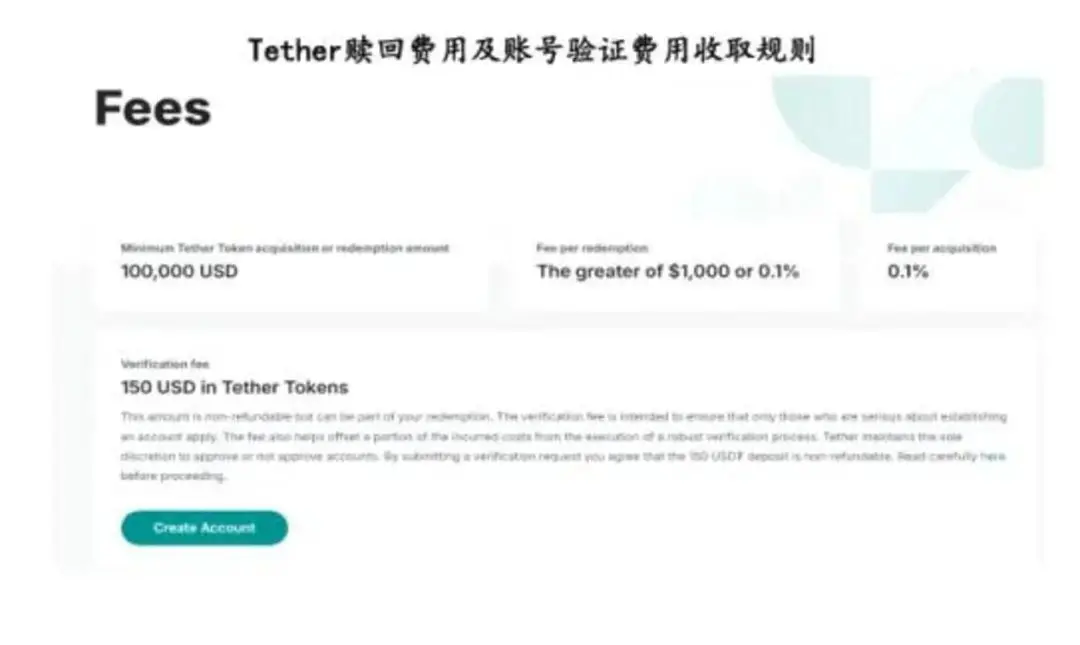
This greatly reduces the redemption frequency of stablecoins, meaning that stablecoin issuers do not need too much reserve to meet liquidity demands.
Due to the extremely low financing costs, coupled with regulatory requirements, stablecoin issuers do not need to seek various high-return but high-risk loans like GE; they only need to purchase risk-free financial products—government bonds. Currently, the four major USD stablecoin issuers collectively hold about $180 billion in U.S. government bonds. Of course, stablecoin companies can also invest in other products; for example, Tether, the largest stablecoin issuer, holds some gold and Bitcoin.
If GE, Lehman Brothers, and Goldman Sachs had such financial tools, they would not have faced catastrophic failures during the 2008 financial crisis—government bonds are a risk-free investment, and during the financial crisis, they not only did not decline but actually increased in value. Even if users redeem on a large scale and sell stablecoins, they can still repay their debts smoothly.
In short: the financing costs of stablecoins are very low, and the risks are also very low.
In fact, the reason banks and insurance companies can make money is fundamentally due to having a very low-cost and relatively low-risk source of funds.
However, with the support of stablecoins, companies like Walmart, JD.com, and Amazon, which have a large transaction volume, are likely to become the players with the lowest financing costs in the future. They are not insurance companies, but they can enjoy negative-cost leverage like insurance companies.
Of course, the issuance of stablecoins by companies is still in the exploratory stage. Whether they will be issued on a large scale or only serve as a supplement for a few scenarios like cross-border trade remains unanswered by each company.
Even if issued on a large scale, can it become a widely accepted currency? If not, it would just be a "preloaded shopping card" with a different appearance for consumers. If in the past consumers were unwilling to pre-load thousands of dollars at Walmart, having stablecoins may not change their acceptance.
Whether this is a revolution or just a gimmick can only be validated by time.
Related reading: "Stablecoins Breaking the Circle: In-Depth Analysis of 12 Countries' Stablecoin Regulatory Policies"
免责声明:本文章仅代表作者个人观点,不代表本平台的立场和观点。本文章仅供信息分享,不构成对任何人的任何投资建议。用户与作者之间的任何争议,与本平台无关。如网页中刊载的文章或图片涉及侵权,请提供相关的权利证明和身份证明发送邮件到support@aicoin.com,本平台相关工作人员将会进行核查。




